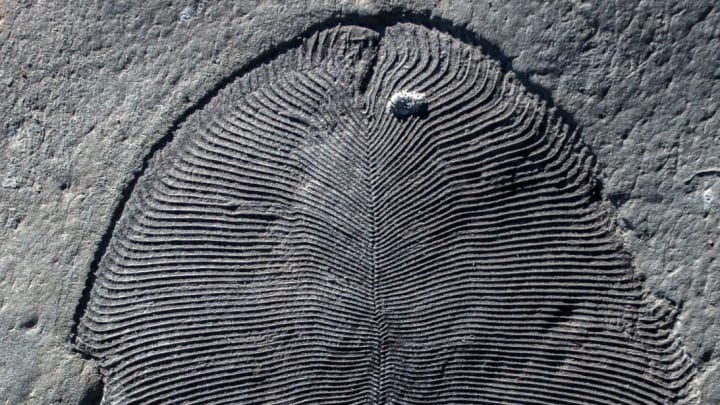A bizarre sea creature whose fossils look like a cross between a leaf and a fingerprint may be Earth's oldest known animal, dating back 558 million years.
As New Scientist reports, researchers from the Australian National University (ANU) made a fortunate find in a remote region of Russia: a Dickinsonia fossil with fat molecules still attached. These odd, oval-shaped creatures were soft-bodied, had rib structures running down their sides, and grew about 4.5 feet long. They were as “strange as life on another planet,” researchers wrote in the abstract of a new paper published in the journal Science.

Although Dickinsonia fossils were first discovered in South Australia in 1946, researchers lacked the organic matter needed to classify this creature. "Scientists have been fighting for more than 75 years over what Dickinsonia and other bizarre fossils of the Edicaran biota were: giant single-celled amoeba, lichen, failed experiments of evolution, or the earliest animals on Earth,” senior author Jochen Brocks, an associate professor at ANU, said in a statement.
With the discovery of cholesterol molecules—which are found in almost all animals, but not in other organisms like bacteria and amoebas—scientists can say that Dickinsonia were animals. The creatures swam the seas during the Ediacaran Period, 635 million to 542 million years ago. More complex organisms like mollusks, worms, and sponges didn’t emerge until 20 million years later.
The fossil with fat molecules was found on cliffs near the White Sea in an area of northwest Russia that was so remote that researchers had to take a helicopter to get there. Collecting the samples was a death-defying feat, too.
“I had to hang over the edge of a cliff on ropes and dig out huge blocks of sandstone, throw them down, wash the sandstone, and repeat this process until I found the fossils I was after,” lead author Ilya Bobrovskiy of ANU said. Considering that this find could change our understanding of Earth’s earliest life forms, it seems the risk was worth it.
[h/t New Scientist]
